In 2018, François Lambert explained to us the work of Hybride made on Solo: A Star Wars Story. He then worked on many projects like Aladdin, Watchmen and The Mandalorian. He joined the DNEG teams in 2009 and worked on Greyhound, Venom: Let There Be Carnage and Devotion, among others.
In 2020, Aleks Pejic told us about the work of Cinesite work on the first season of The Witcher. He then worked on Space Jam: A New Legacy and the second season of The Witcher. In 2021, he joined DNEG and worked on Fast X.
Michael Grobe has over 20 years of visual effects experience. He worked in many studios like Cinesite and Weta FX. His filmography includes numerous projects such as Total Recall, Star Trek Beyond, Pacific Rim: Uprising and Slumberland.
What is your background?
Michael Grobe // I started in the world of feature film and visual effects thirty years ago in Germany. Since then, I’ve worked in various VFX roles and been based in London, Los Angeles, New Zealand and India, combining my practical onset experience and skills as a camera operator and photographer with the ever evolving field of computer graphics as an artist and supervisor. As a formal education in the field, I graduated as an engineer for audiovisual media technology.
How did you and DNEG get involved on this show?
Francois Lambert // DNEG got involved quite early in the process. As the main VFX partner on the project, we were introduced to it in the months leading to the shoot. Having two big sequences, and some smaller ones, this time in pre-production allowed us to get familiar with the story, the characters, and the challenges ahead.
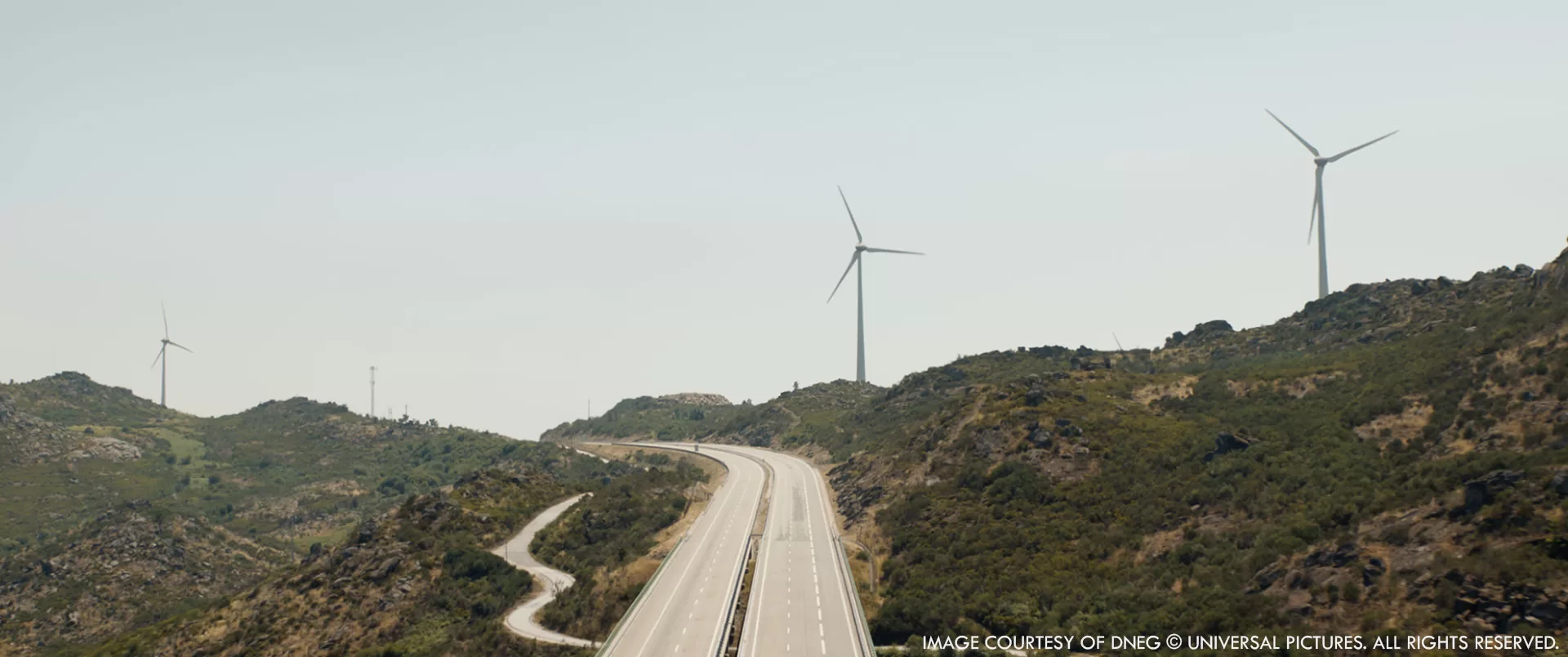
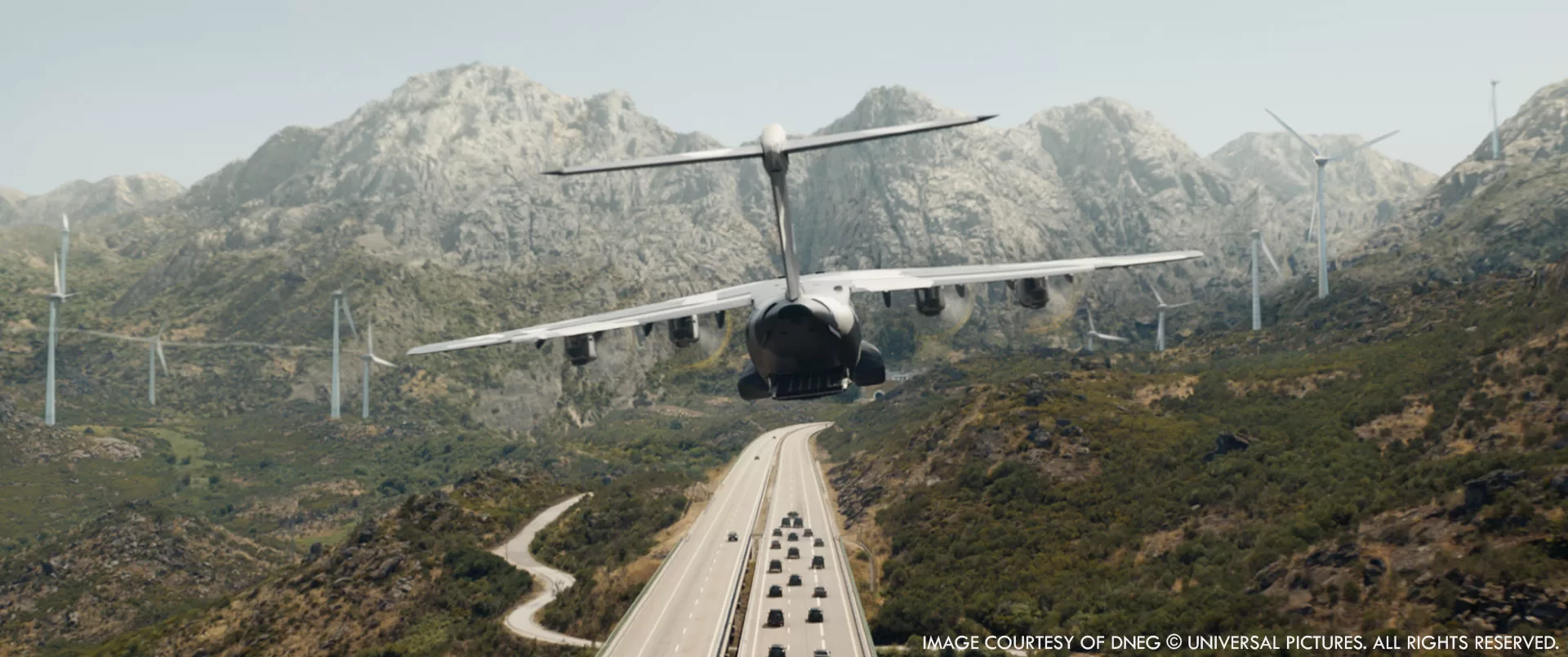
What was your feeling to enter into this iconic franchise?
Michael Grobe // It was great to get to work on another Fast movie, for me it is the third one after Fast 8 and Fast 9. Fast movies are always fun to be a part of. The over-the-top nature of the action, and the seamless integration of the VFX work with world-class stunts and car action performed in camera, make it very rewarding and enjoyable. It is also a pleasure to collaborate again with Peter Chiang as the Production VFX Supervisor, I’ve had the chance to do so on a few movies now including Fast 9. The Fast movies have a very large and loyal fan base globally, so it was both a challenge and, at the same time, a rewarding experience to help shape the visuals for this movie.
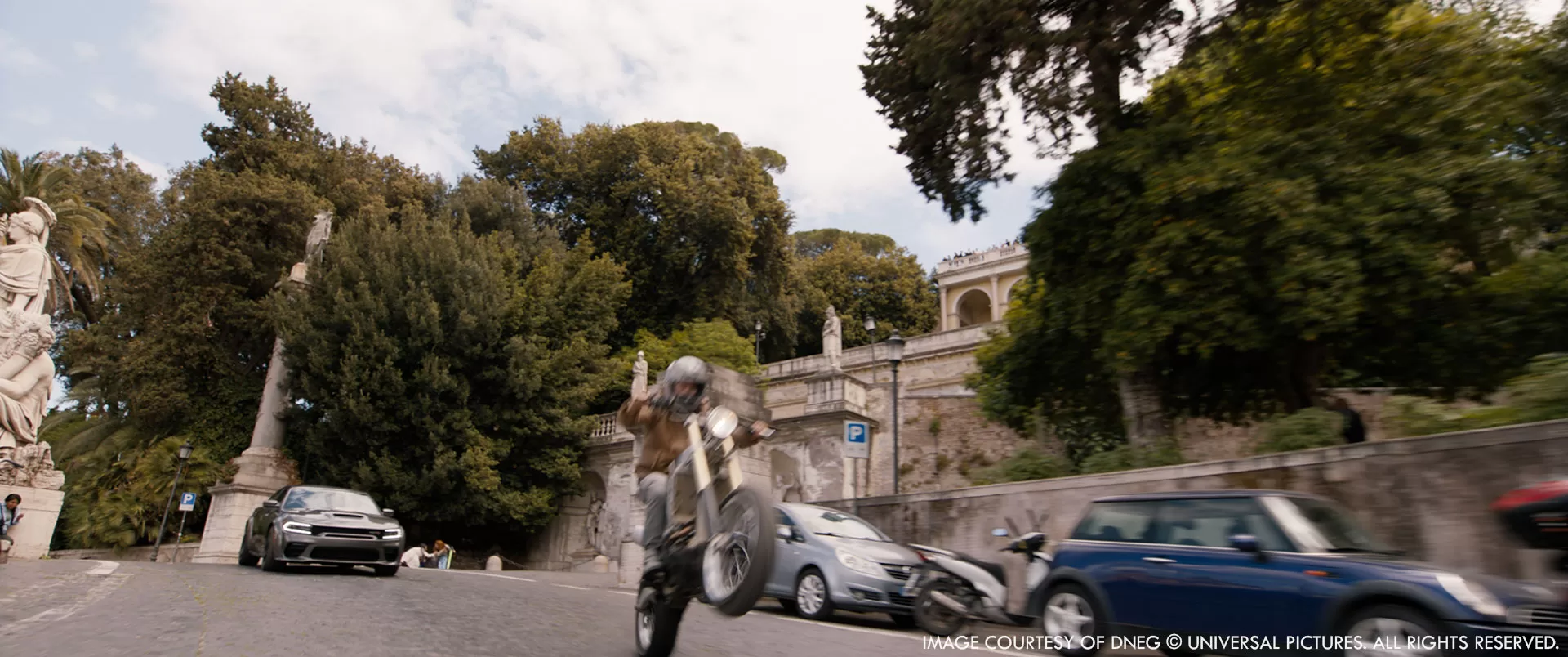
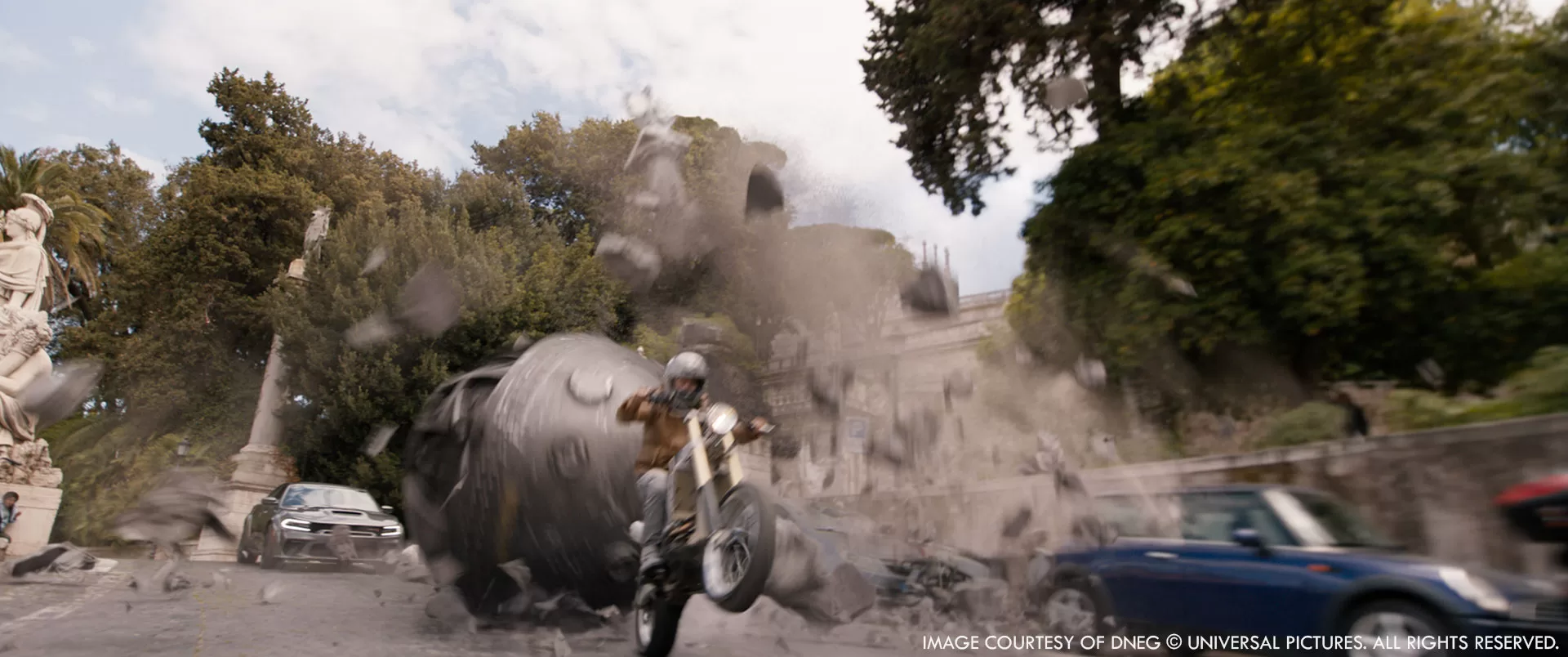
How was the collaboration with Director Louis Leterrier and Production VFX Supervisor Peter Chiang?
Francois Lambert // Working with Peter Chiang was a pleasure. With his prior experience on Fast 9, he brought a wealth of knowledge to the project. He generously shared his expertise, provided valuable context, and played a key role in designing complex stunt sequences. Throughout the production, Peter was an excellent partner, focused on solving problems and finding ways to enhance and clarify the sequences. Louis Leterrier joined the production while it was already underway, taking over from Justin Lin. He was open to suggestions and collaborative, which contributed greatly to make our VFX work shine even brighter.
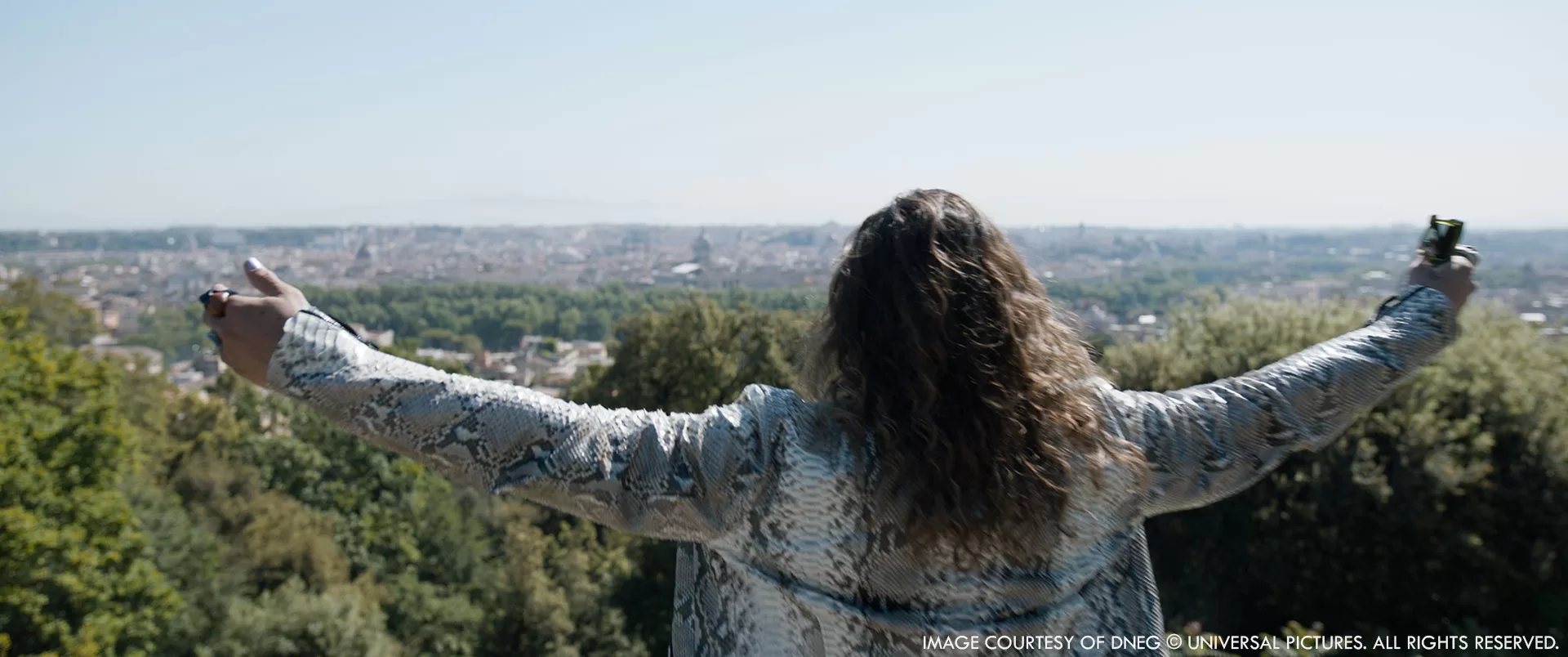
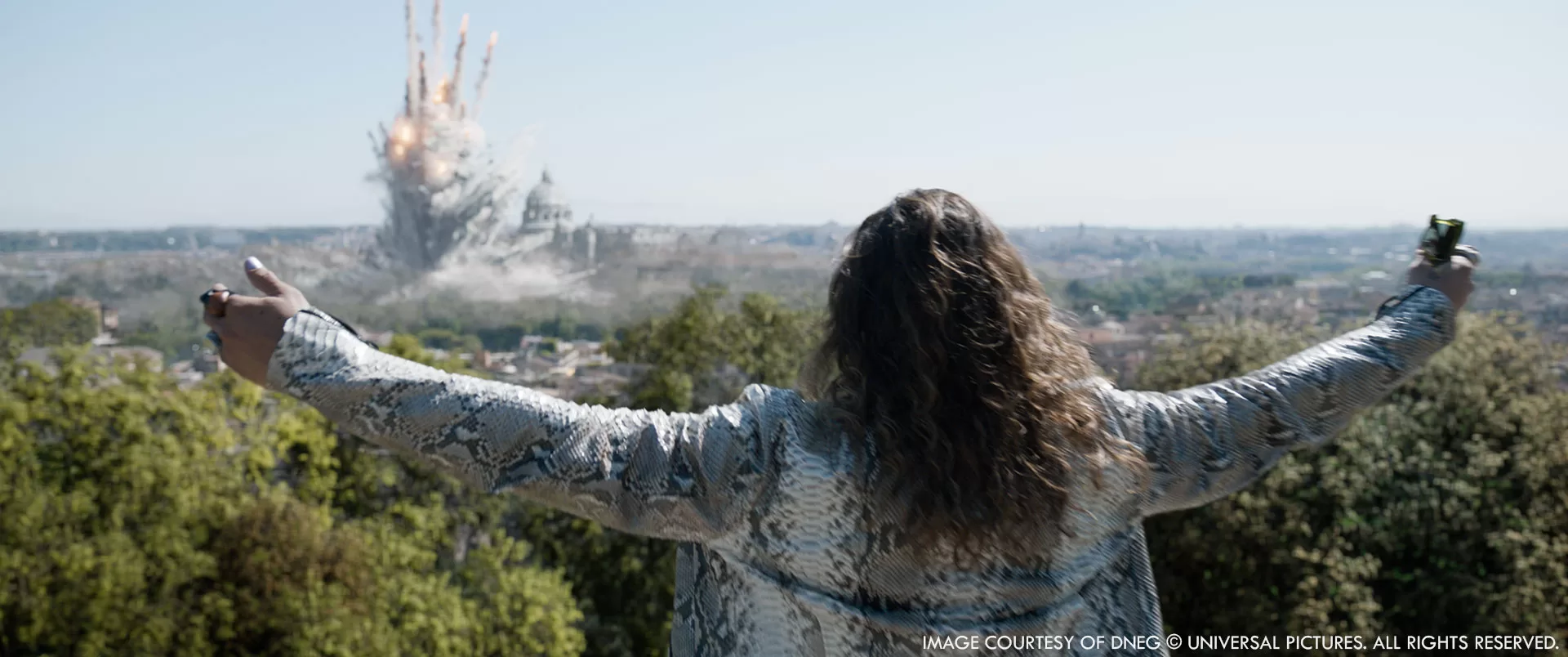
How did you split the work amongst your and the DNEG offices?
Francois Lambert // The work was divided among three units at DNEG: one in London led by Aleks, one in Mumbai led by Michael, and one in Montreal led by myself.
What are the sequences made by DNEG?
Francois Lambert // DNEG handled two major sequences in the film: the Rome Bomb sequence, which occurs early on, and the Portugal chase in the third act. The third act included the Cannon Car sequence, the Car Jump, the Tunnel Grab, and the Highway Chase sequence. In addition to these, we also worked on several smaller sequences throughout the movie.
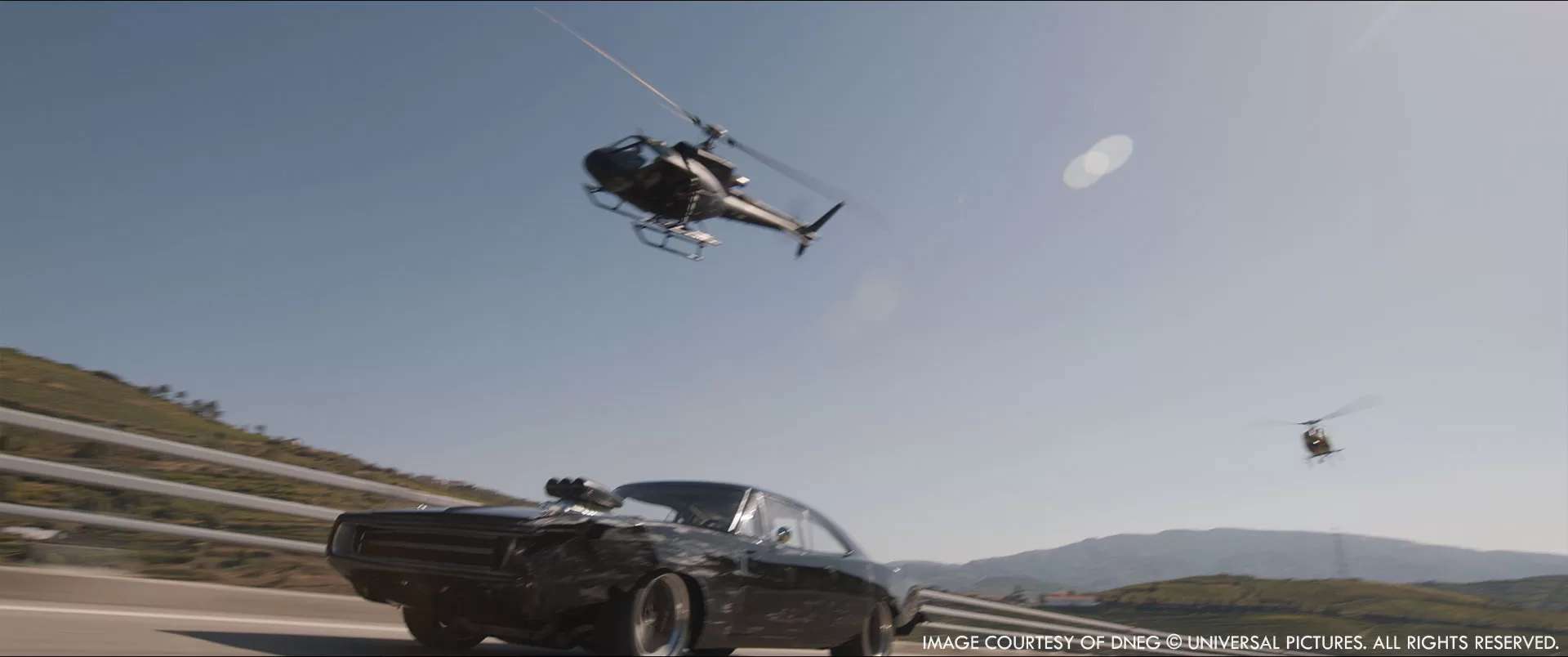
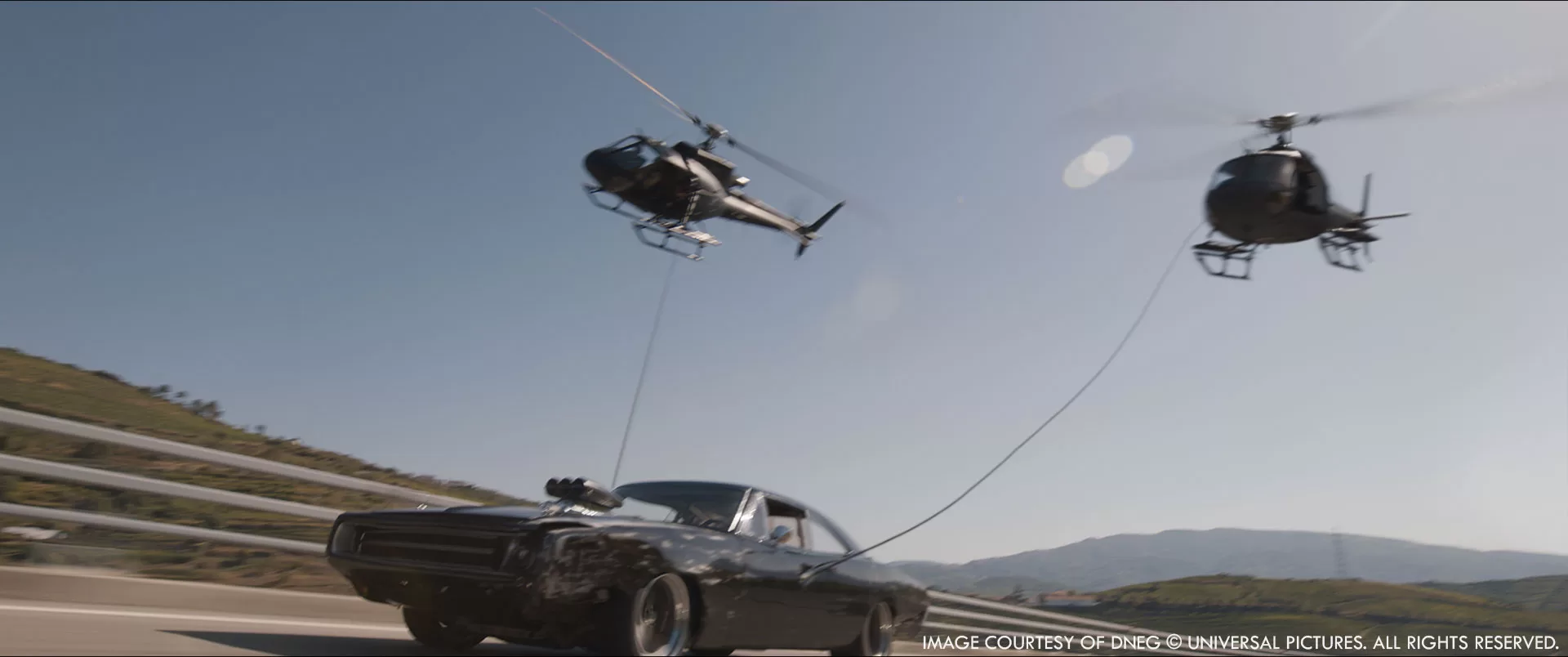
The Fast movies are all about cars. Can you elaborate about their creation?
Francois Lambert // When it comes to the design aspect, each car in the movie is based on a real car used in the stunt scenes – even the cool El Camino fitted with cannons driven by Jakob. Our goal was to create CG versions of these cars that exactly resembled the real ones, including capturing the various levels of damage the cars sustain throughout the story. For instance, the Charger RT in the Portugal sequence had five different high-resolution damage variations. We paid attention to the modelling and texture details, even for the interior of the car since there were scenes where the doors would be open as Lil. Brian jumps from Dante’s Fairlane to Dom’s Charger. It was crucial for us to maintain continuity and replace cars or parts of cars as necessary to ensure consistent damage. In the end, it becomes nearly impossible to distinguish between the real cars and the CG versions.
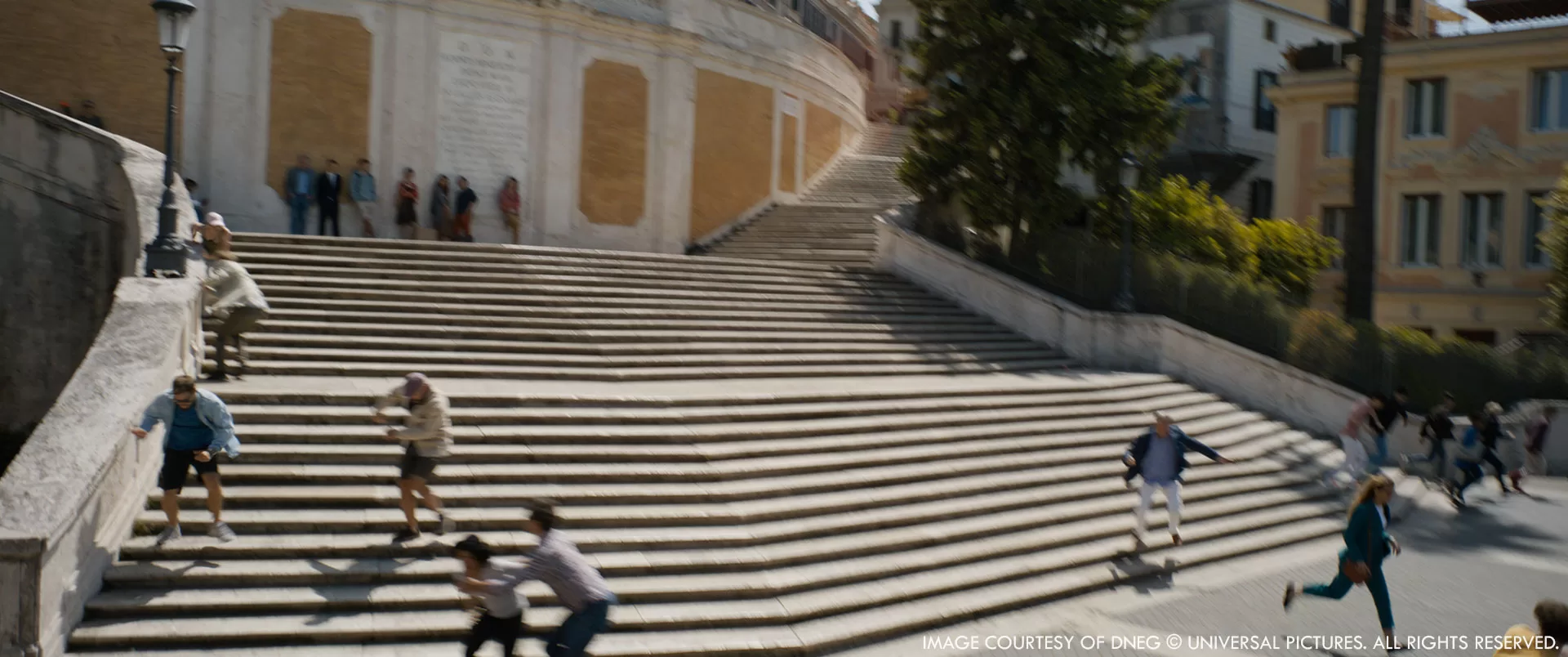
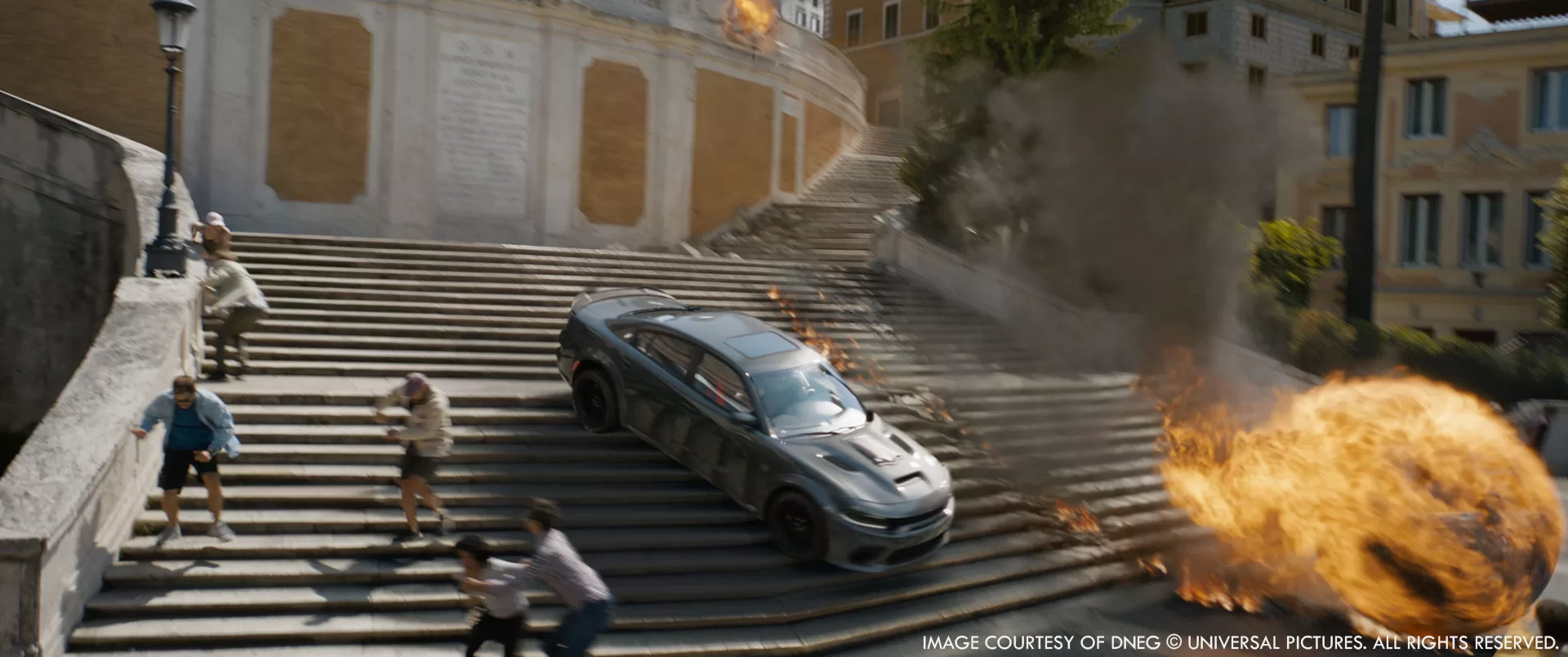
Which stunt was the most complicated to enhance?
Francois Lambert // There were several challenging stunts, but the one that I personally supervised and found the most complex was the ‘Nunchuck sequence’. This refers to the part in the third act where Dom’s Charger is harpooned by two helicopters. Leading to the most climactic moment, Dom activates his NOS causing the helicopters to collide in mid-air and crash. He then proceeds to drag the helicopters along the highway, using them as powerful weapons to take out mercenary cars in classic Fast and Furious style.
To achieve this sequence, an empty stunt car was projected from the top deck to the lower deck of a Portugal Highway. While the car crashed on impact, this stunt provided us with a realistic trajectory that a car of that weight would follow and served as the anchor for the massive jump. At this point of the sequence, all the helicopters are CG and animating them required multiple iterations in order to get it right. We had the assistance of Fred North, the pilot of the real stunt helicopter on set, who provided valuable insights on how helicopters would react when lifting heavy objects or when subjected to tugging and pulling forces. I believe the final result is a beat that strikes a balance between realism and spectacular visuals.
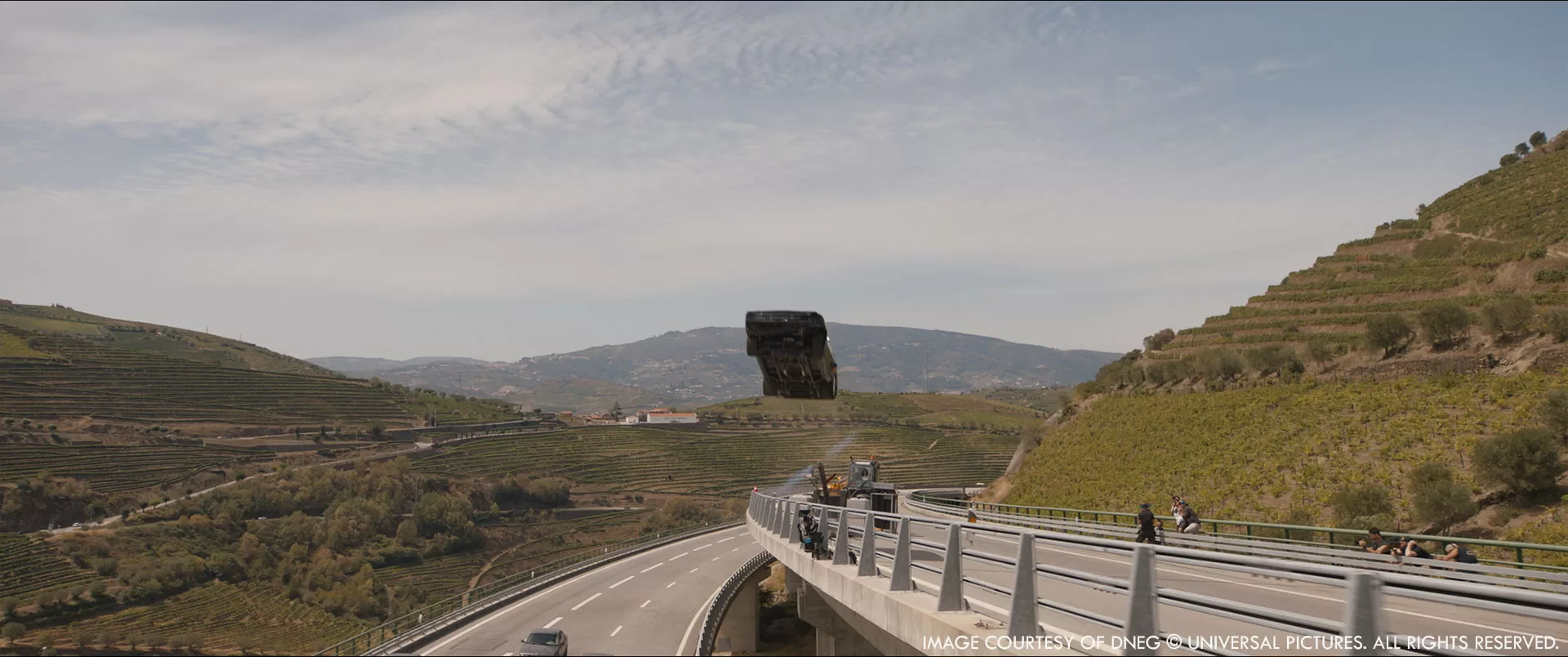
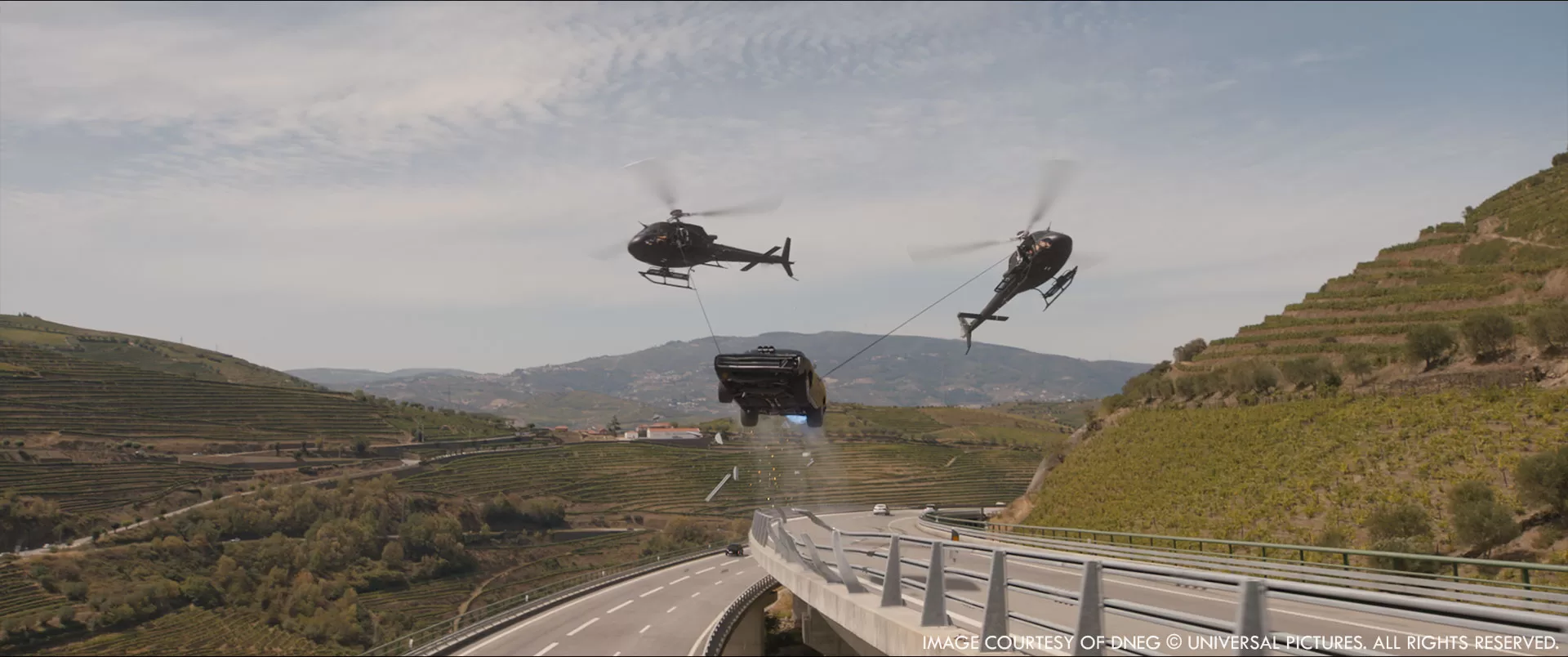
Which car is your favorite?
Francois Lambert // I personally like the Chevrolet El Camino fitted with cannons. It’s a retro car but with features that added a new twist to the movie!
Michael Grobe // My favourite is also the Chevrolet El Camino, the DIY style cannon fit makes it stand out from the crowd and puts it into its own category.
Aleks Pejic // Mine is the Dodge Charger! Visually it’s so cool. The team who looked after the cars on set knew everything inside out about cars, and they said if they had the money to pick one – that would be the one! Plus it features in the Rome sequence, so I have to pick it!
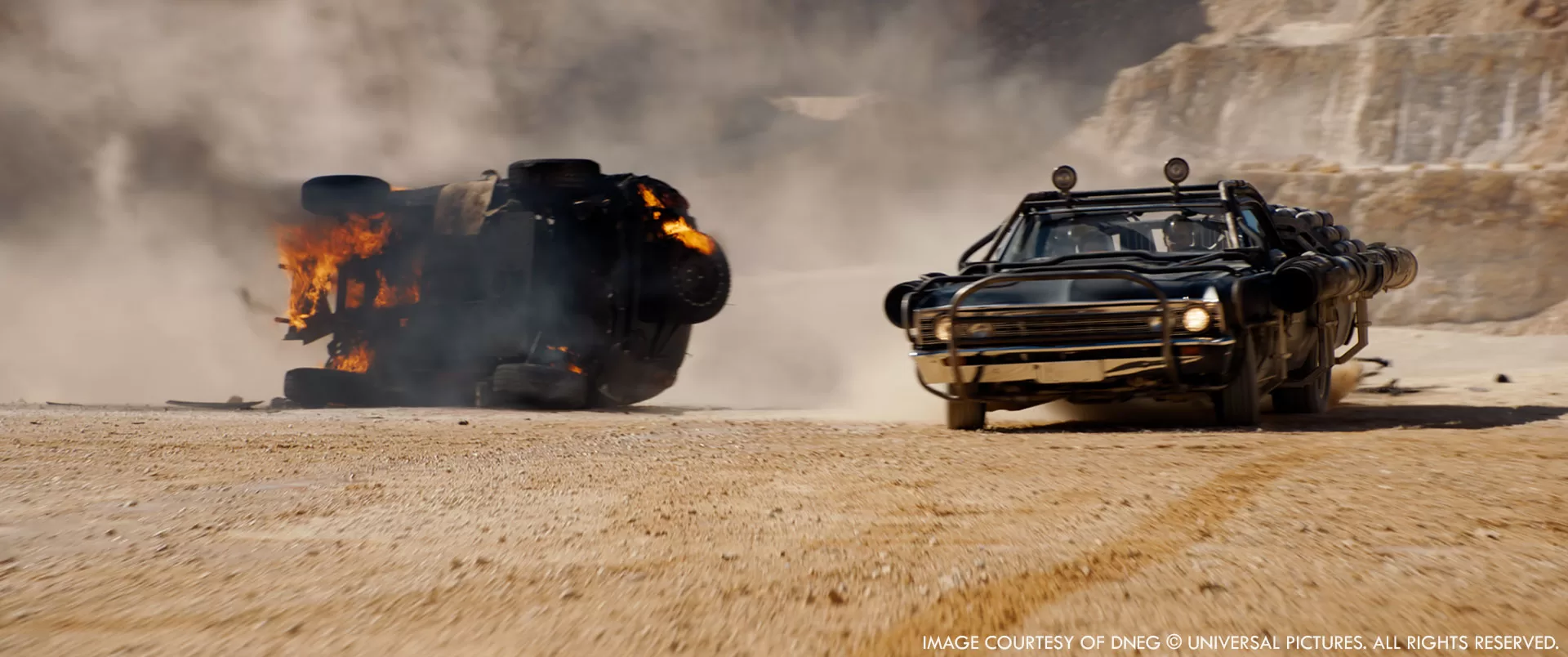
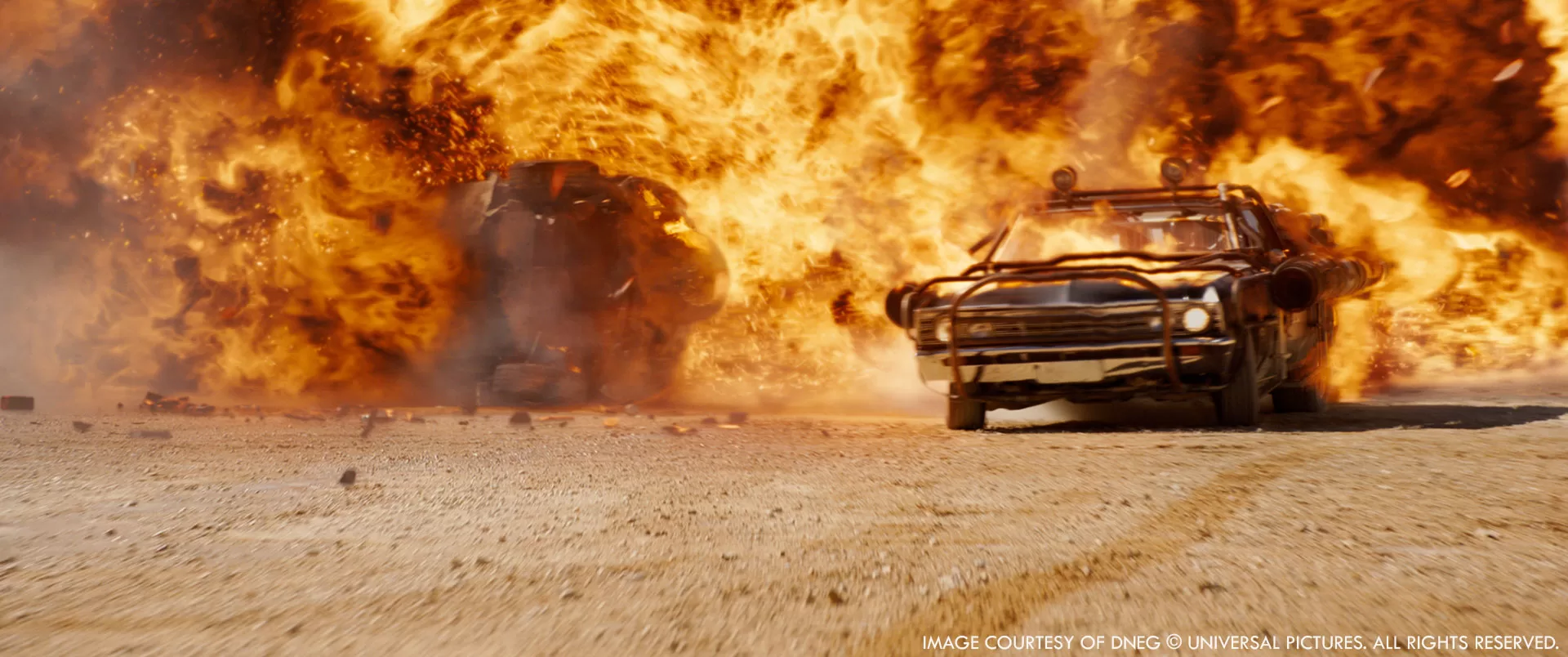
How did you recreate the various locations of Rome?
Aleks Pejic // The Rome sequences were shot in different locations – some in Rome and some in Turin – and, as the story had a particular pace, some of the locations had to be compressed distance-wise. So, the final look is not necessarily true to life. We combined together the two shoot locations to create the Rome environments, either by altering the Turin plates and adding Roman features, or by enhancing the Rome plates.
Creating the environments varied from shot to shot. Sometimes we used arial plate photography to reconstruct the geometry and sometimes we created buildings in full CG, depending on the camera moves and how close the shot was to those buildings. We used a combination of all the available tools for environment builds to get the sequences looking as photoreal as possible.
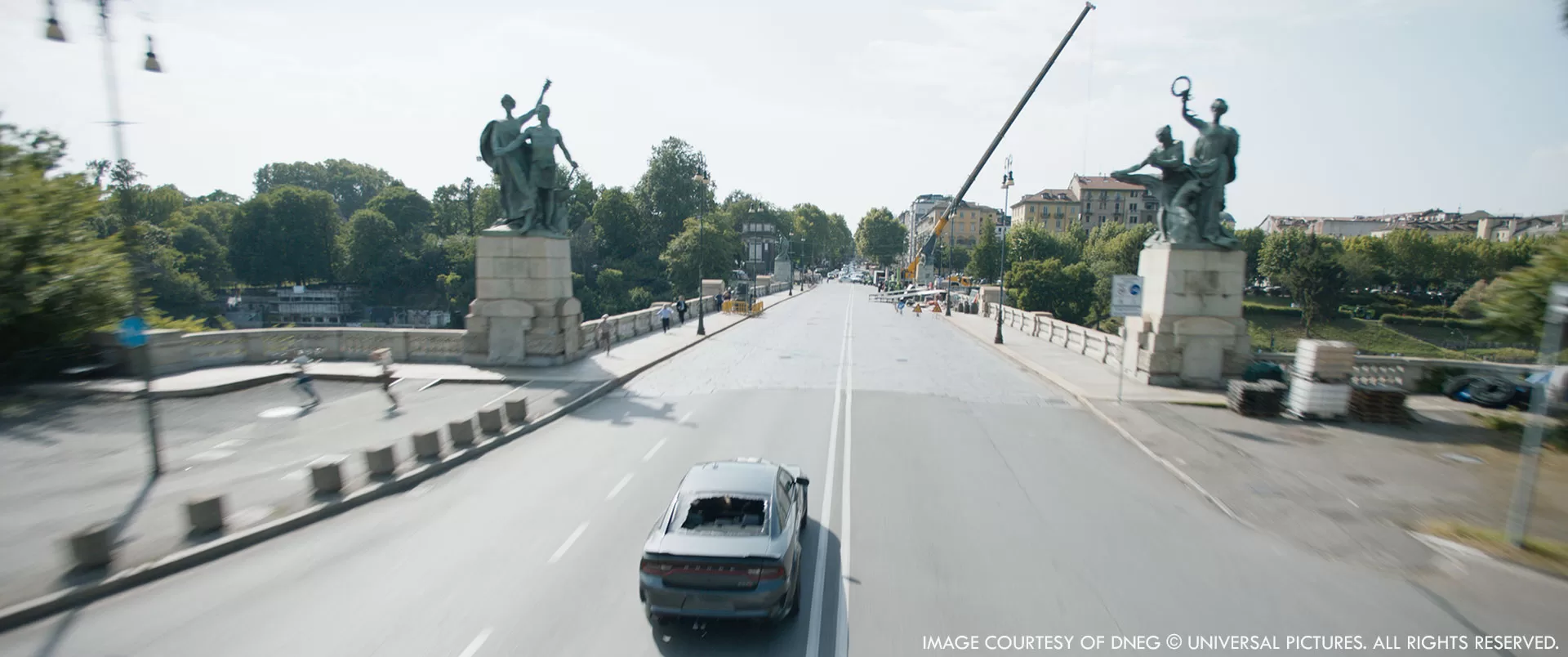
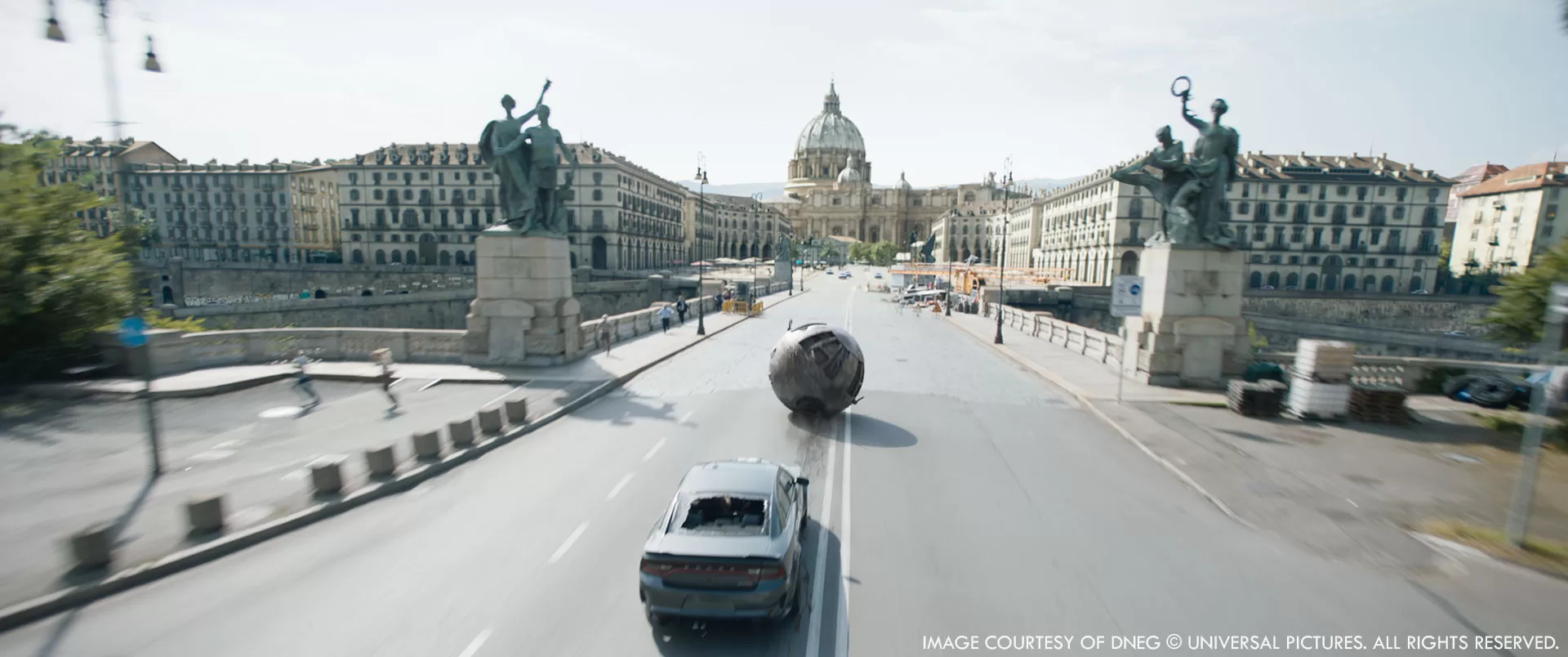
Can you elaborate about the creation and animation of the impressive massive explosion?
Aleks Pejic // We started by referencing both nuclear and underwater explosions throughout history. We quite quickly realised that neither reference on its own would work for the scale and look we needed, so in the end the final explosion was a hybrid of both. From our references, we learned that these kinds of explosions generate a lot of dust, and visually that dust overtakes everything else that’s underneath it. So, building destruction around the explosion became almost secondary and the final look was really the overwhelming dust that is created by these big explosions. For the shockwave sequence, we looked at real life references of tornadoes and hurricanes that reach up to 150 mph. We referenced what would happen to the trees, the buildings and the water, and then tried to recreate something similar.
Both the explosion and shockwave were created in Houdini with lots of different passes to determine the different types of debris, building destruction, the water simulation, spray and waves, and the dust from the ground. The sequence was a combination of a lot of different passes that then went to comp to generate the really complex look.
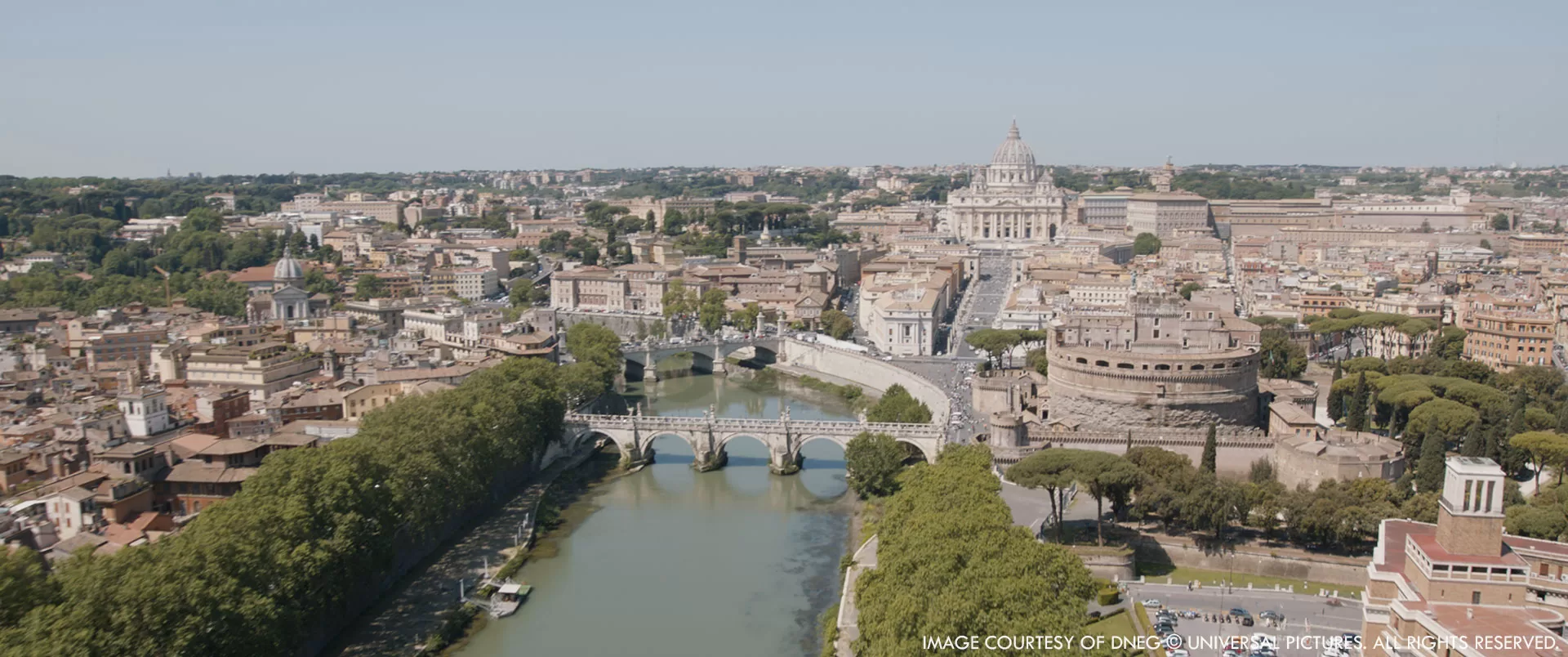
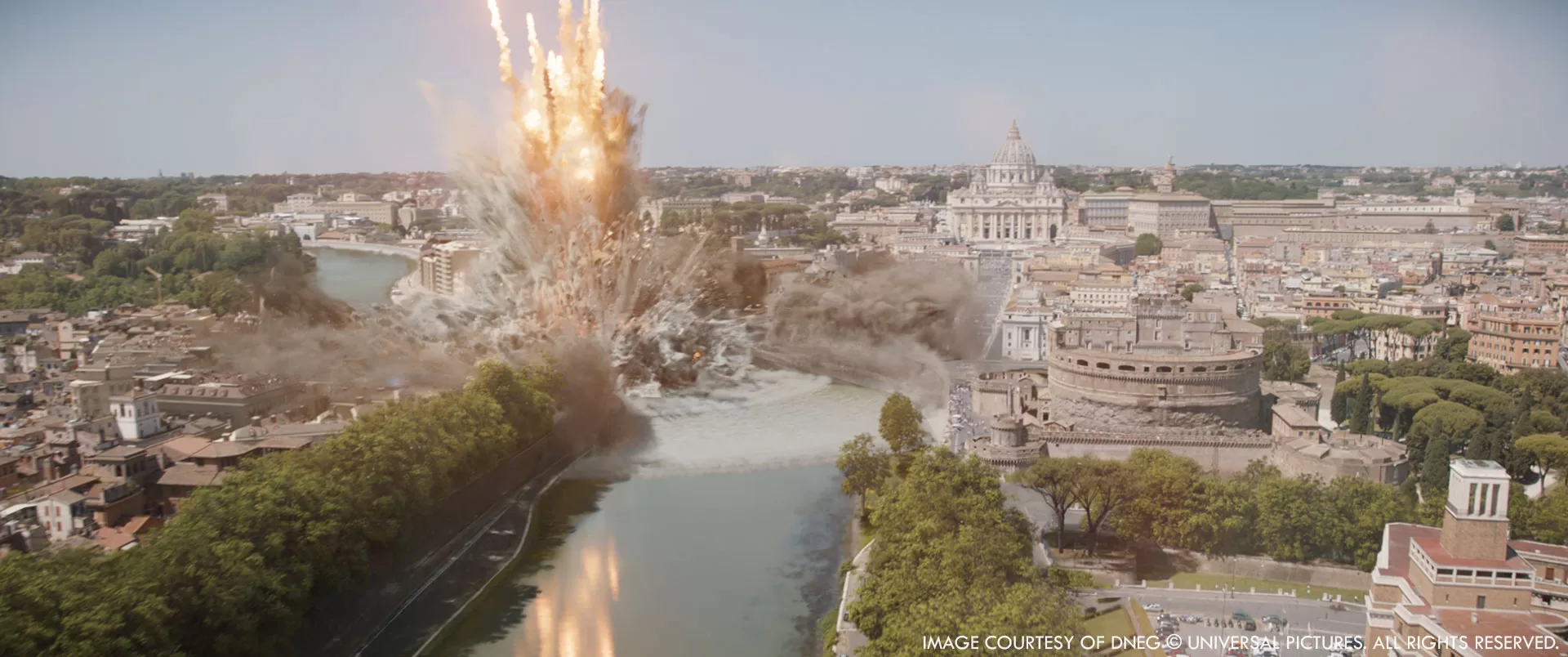
Which shot or sequence was the most challenging?
Aleks Pejic // Every sequence had a particular shot or beat that was challenging. And some of the challenges that we thought would be bigger turned out to be easier, and some of the easier ones ended up being more difficult. The ‘truck flip’ was one of the most challenging. The sequence was shot on location, but the truck flip itself was shot practically on set for health and safety reasons – and it was a big stunt! The truck was fully built, but prepped for special effects so that the stunt could be executed. So, we had to make sure we could combine what was shot on set, and use as much of the plates as possible, with what was shot on location. And then combine that with the CG – it was like trying to combine three worlds together! The complexity of that was very challenging.
Michael Grobe // For my team the most challenging sequence was the ‘Car Jump’. Dom drives his ChargerRT out of the back of an Atlas cargo plane in flight, falls onto the enemy cars on the highway to destroy them, and takes off. A combination of great in-camera stunts and car action, with a CG plane, CG cars, and lots of effects work in a seamlessly extended landscape.
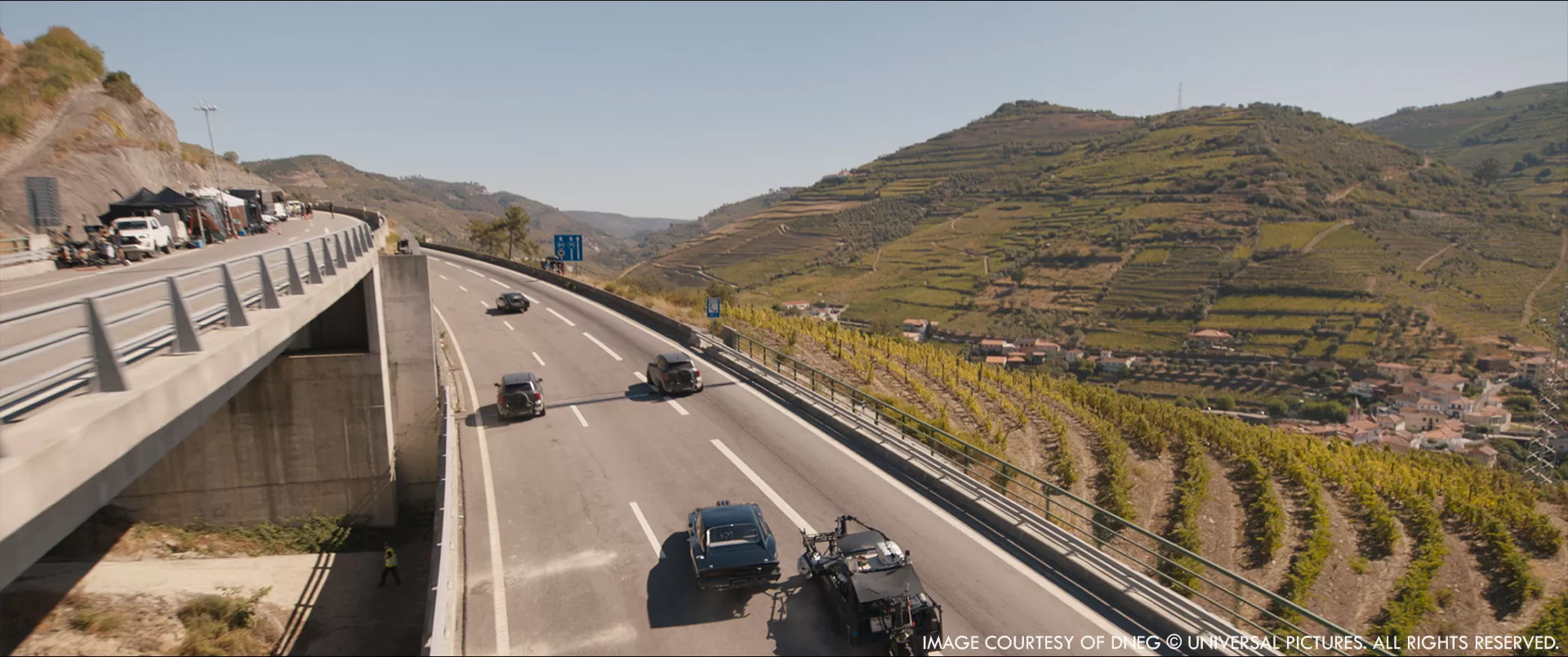
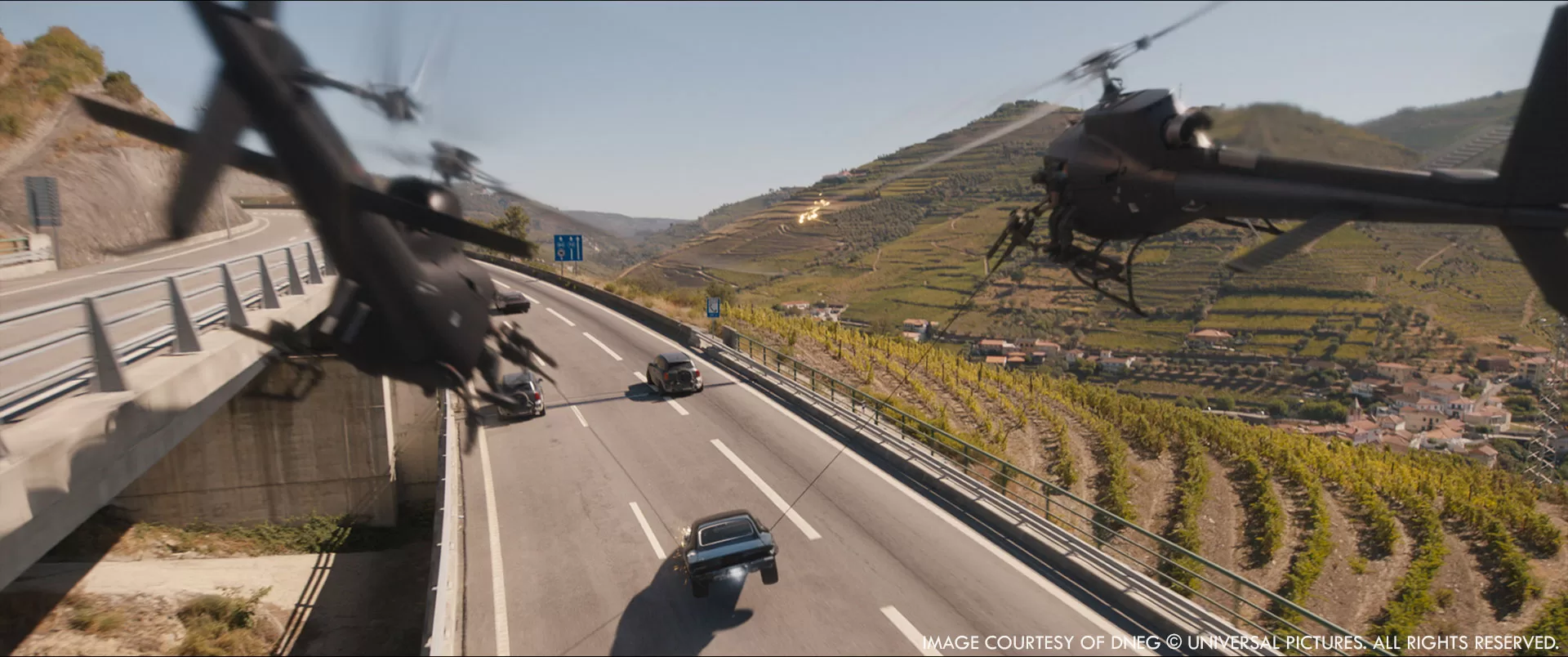
Is there something specific that gives you some really short nights?
Francois Lambert // The animation beat of the crashed helicopter’s husks getting dragged behind the ChargerRT was extremely difficult. Striking the balance between keeping a good realistic weight for such objects while keeping it entertaining proved to be complex. The helicopters also sustain continuous damage, leaving behind a trail of debris, gasoline leaks, fire, sparks, embers, and significant structural damage to the highway along their path.
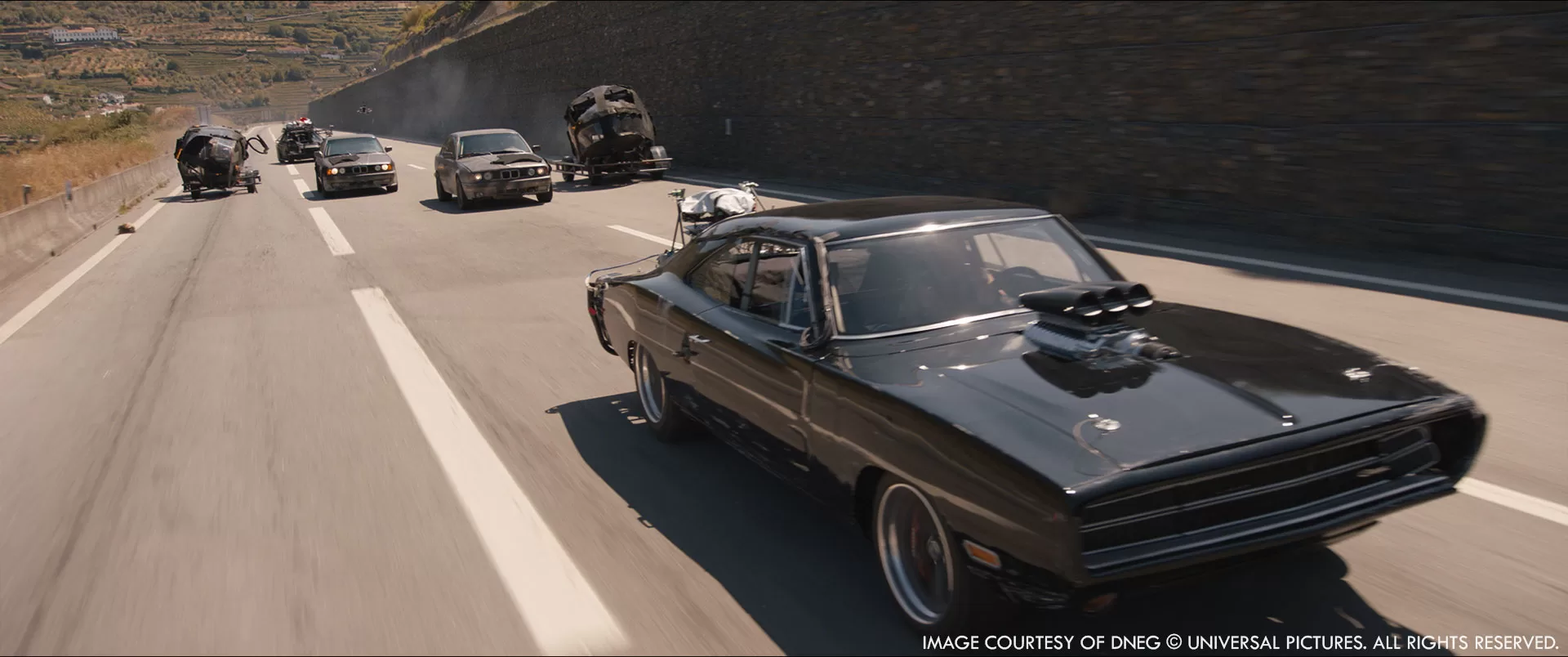
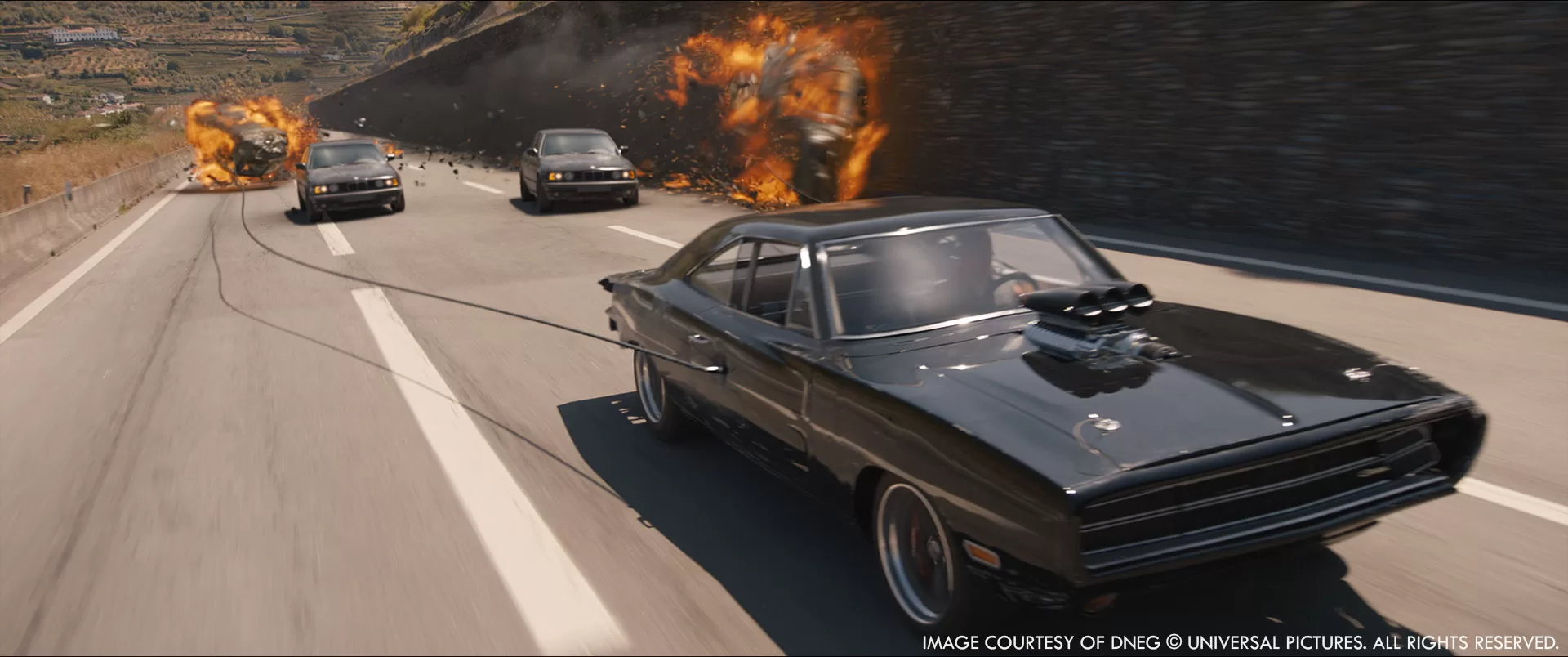
What is your favorite shot or sequence?
Francois Lambert // One of my favorite shots is seeing the ChargerRT leap into the air with the two helicopters in tow. All in slow motion. I find it to be a great and iconic frame composition.
Aleks Pejic // For me, it’s definitely the shockwave! Creatively the shockwave was always a big challenge. But it worked out really well and everyone really liked the end result.
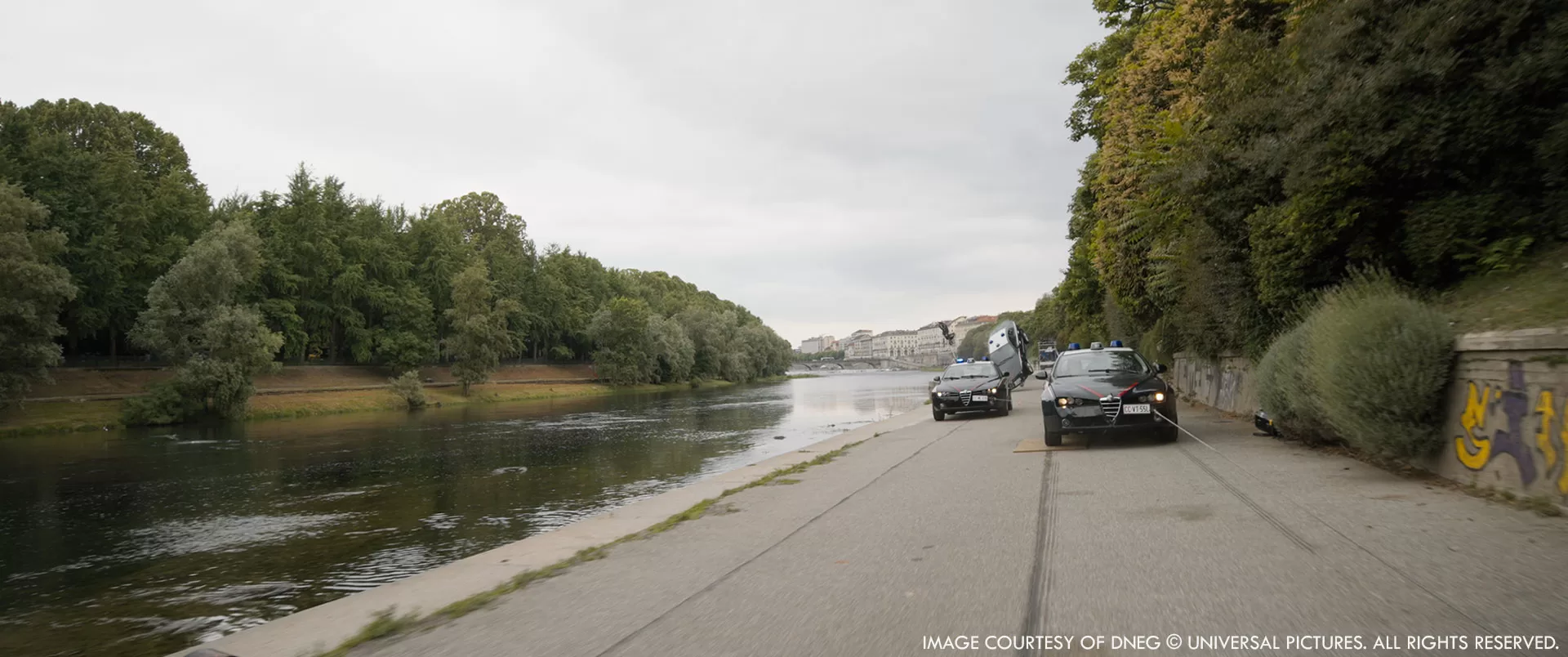
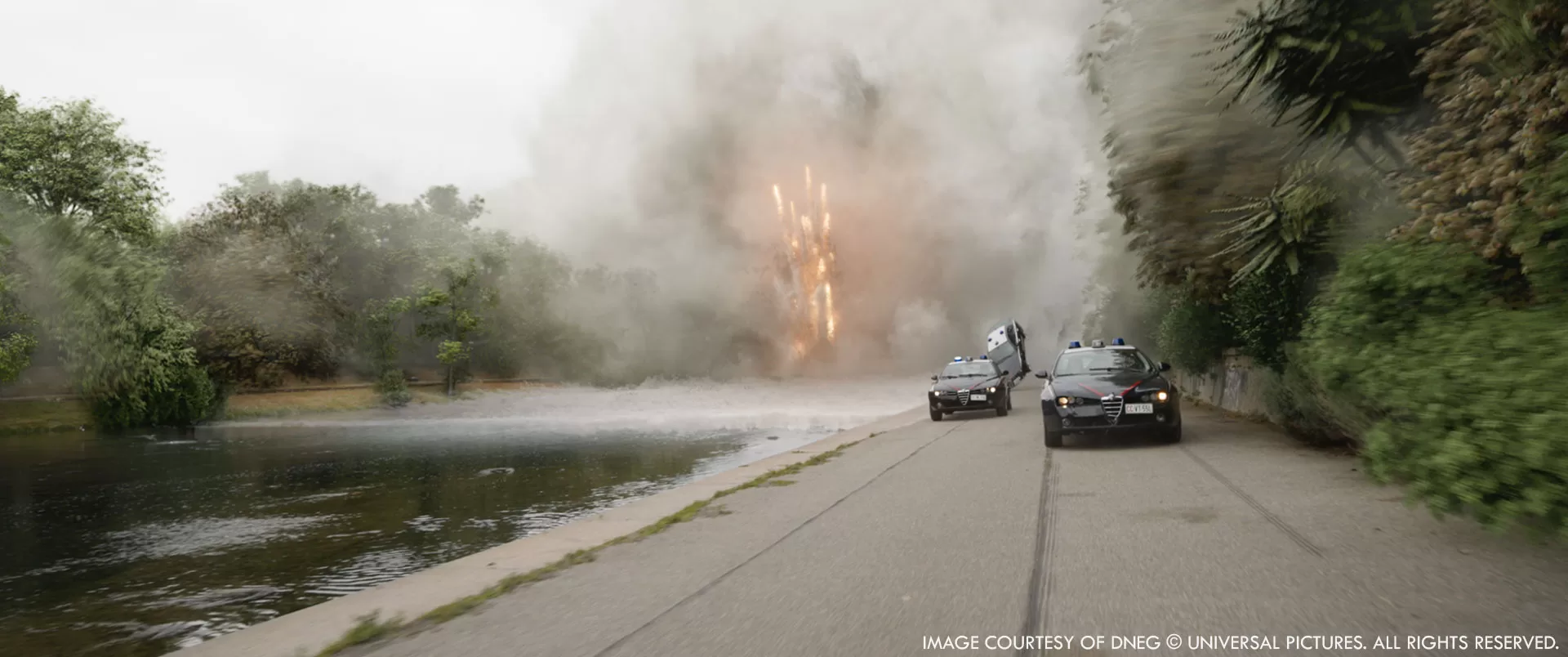
What is your best memory on this show?
Francois Lambert // I spent part of the summer with the second unit in Portugal looking at fast cars and helicopters doing their stunts. Seeing these guys in action and how fearless they are was quite something.
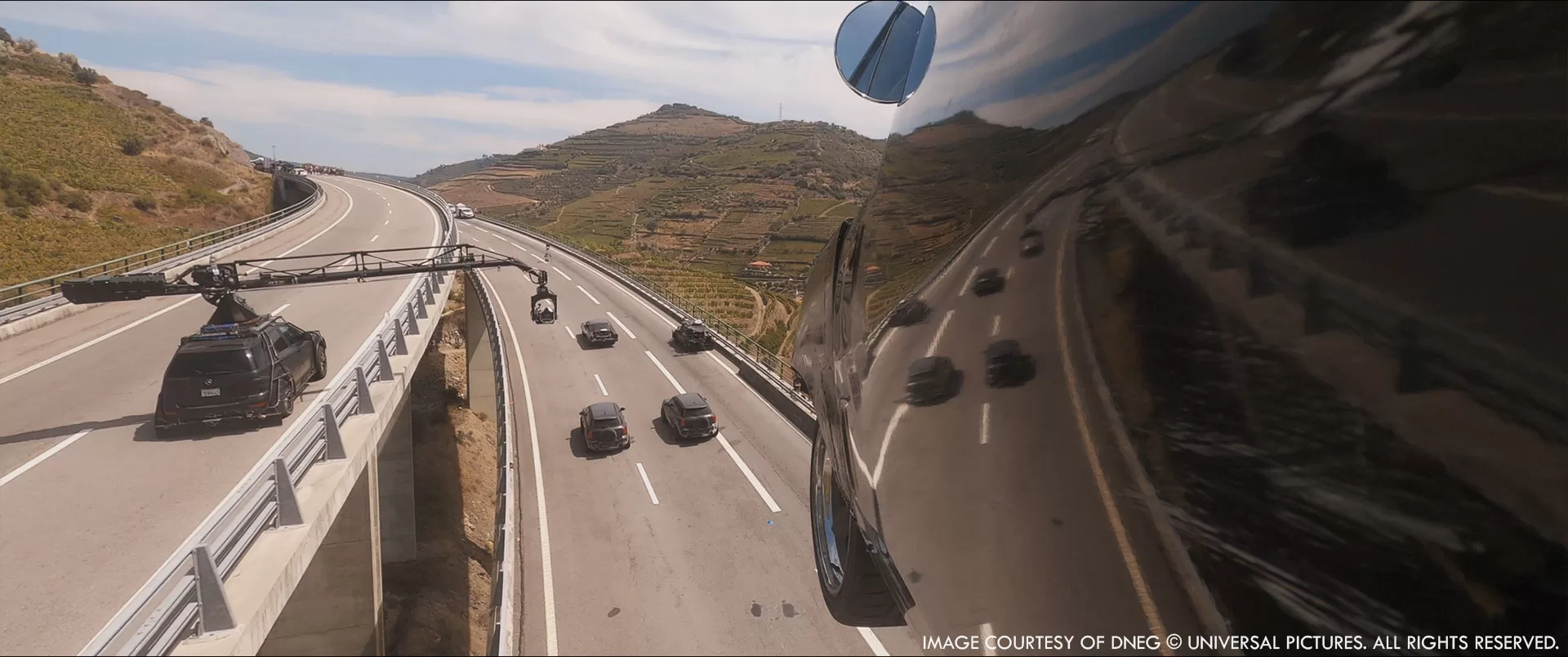
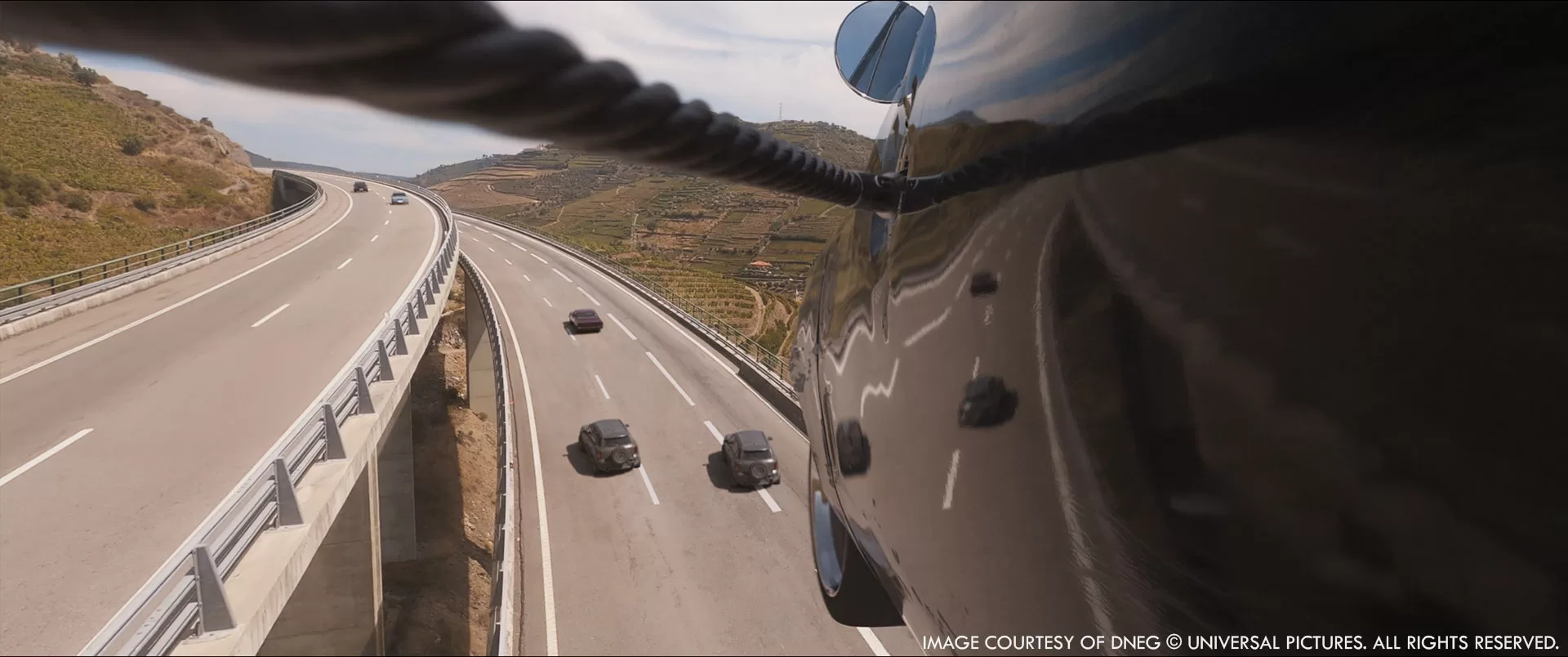
How long have you worked on this show?
Francois Lambert // For my part, it was about 10-11 months.
Michael Grobe // I worked on the show for around 10 months.
Aleks Pejic // My journey started in October / November 2021 and finished mid April 2023, so just over 18 months in total.
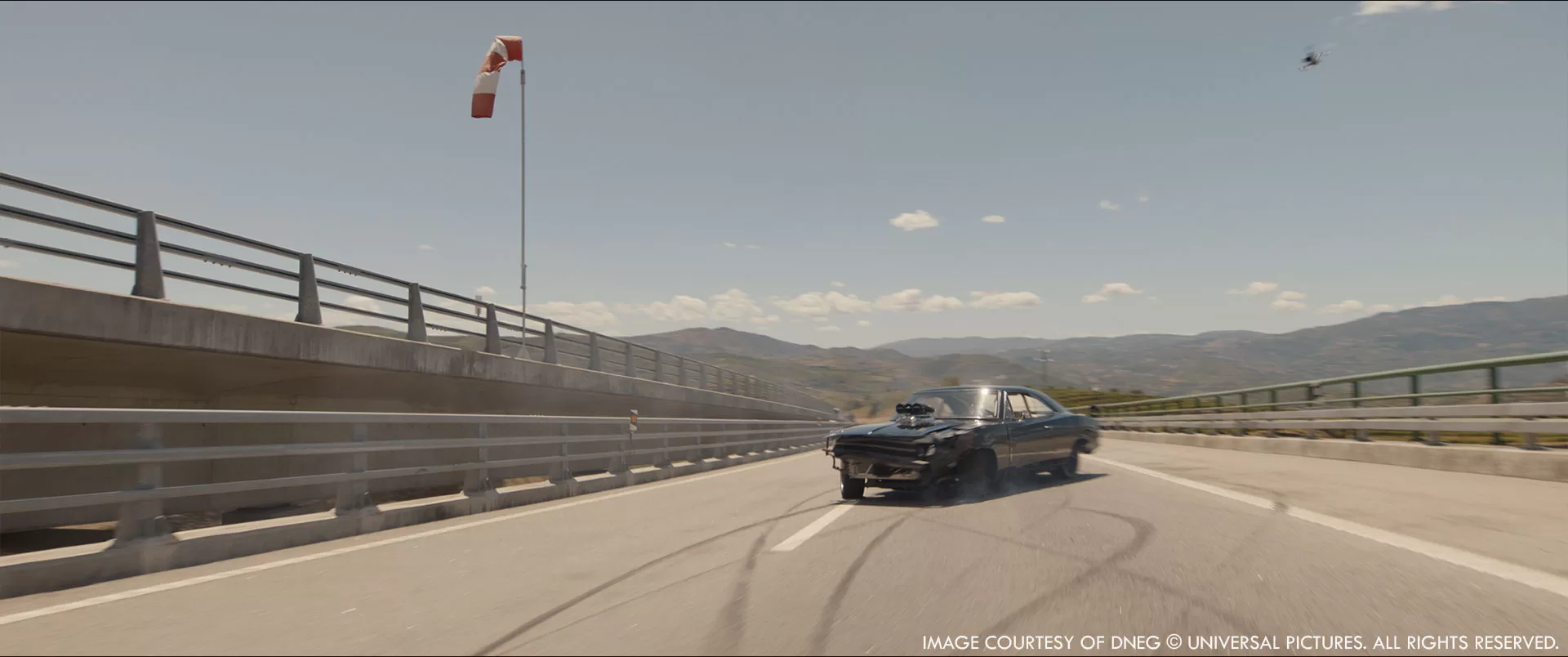
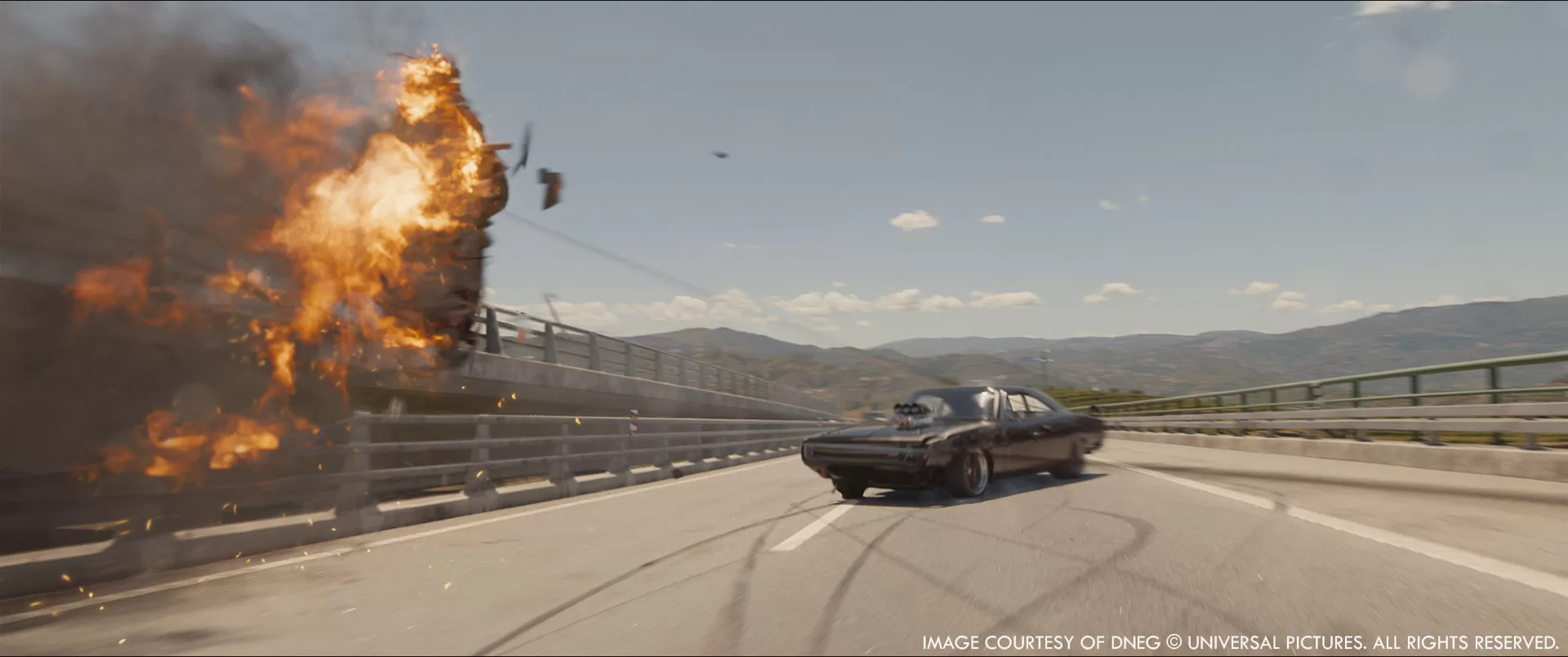
What’s the VFX shots count?
Francois Lambert // Overall, we completed approximately 1,000 shots for the film.
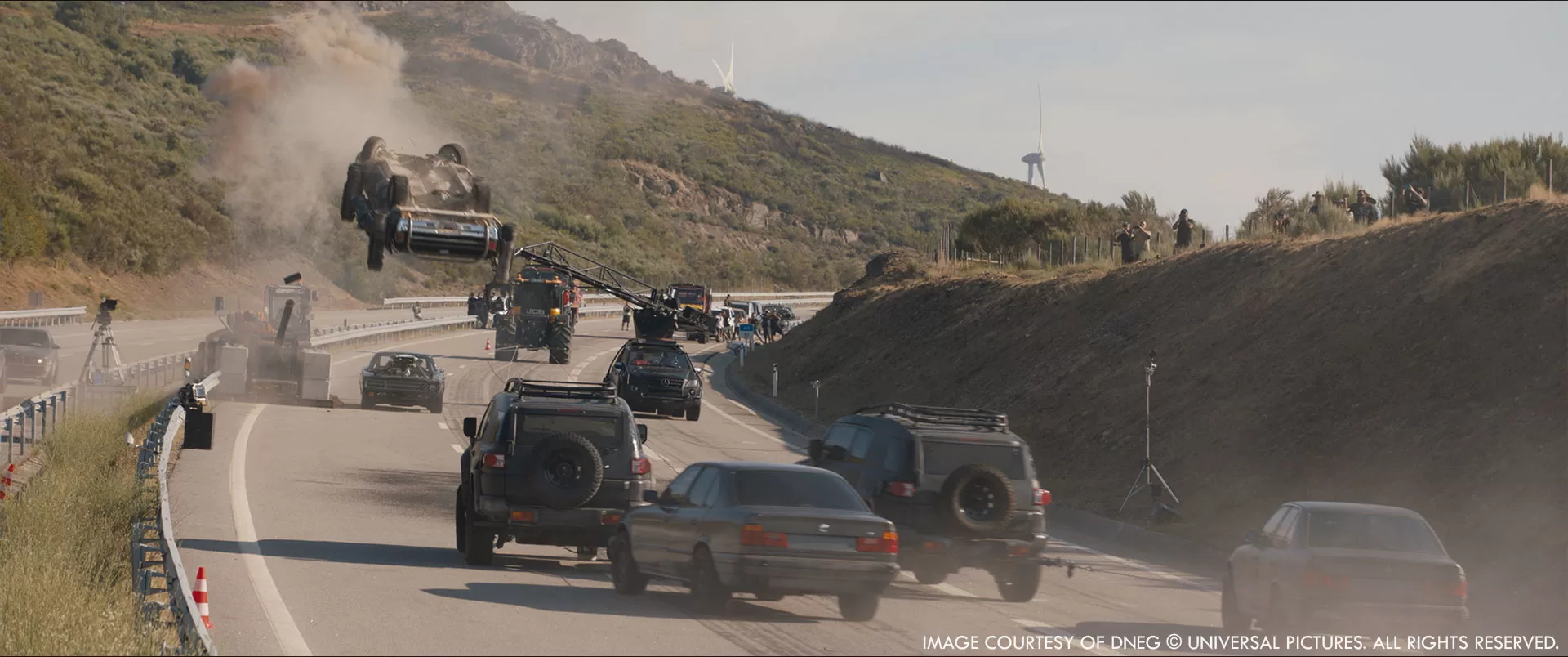
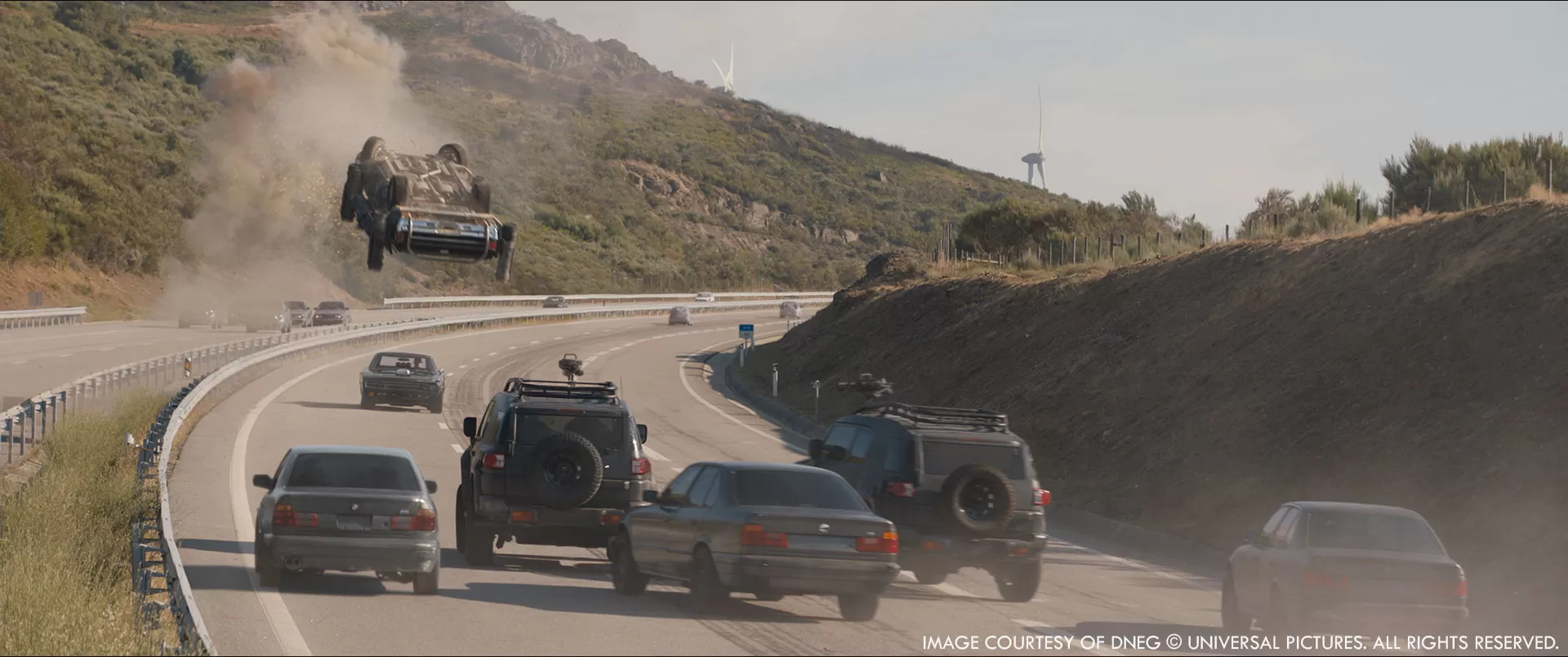
What are the four movies that gave your the passion for cinema?
Michael Grobe // I grew up in the 80s as a teenager, so Star Wars, Indiana Jones, Back To The Future and The Terminator are the movies that fuelled my passion for cinema and a career in feature film the most. Followed by the growing possibilities to create and tell unseen stories through visual effects, as seen in Jurassic Park, The Abyss, Aliens and many more sci-fi, fantasy and adventure movies.
A big thanks for your time.
WANT TO KNOW MORE?
DNEG: Dedicated page about Fast X on DNEG website.
© Vincent Frei – The Art of VFX – 2023






